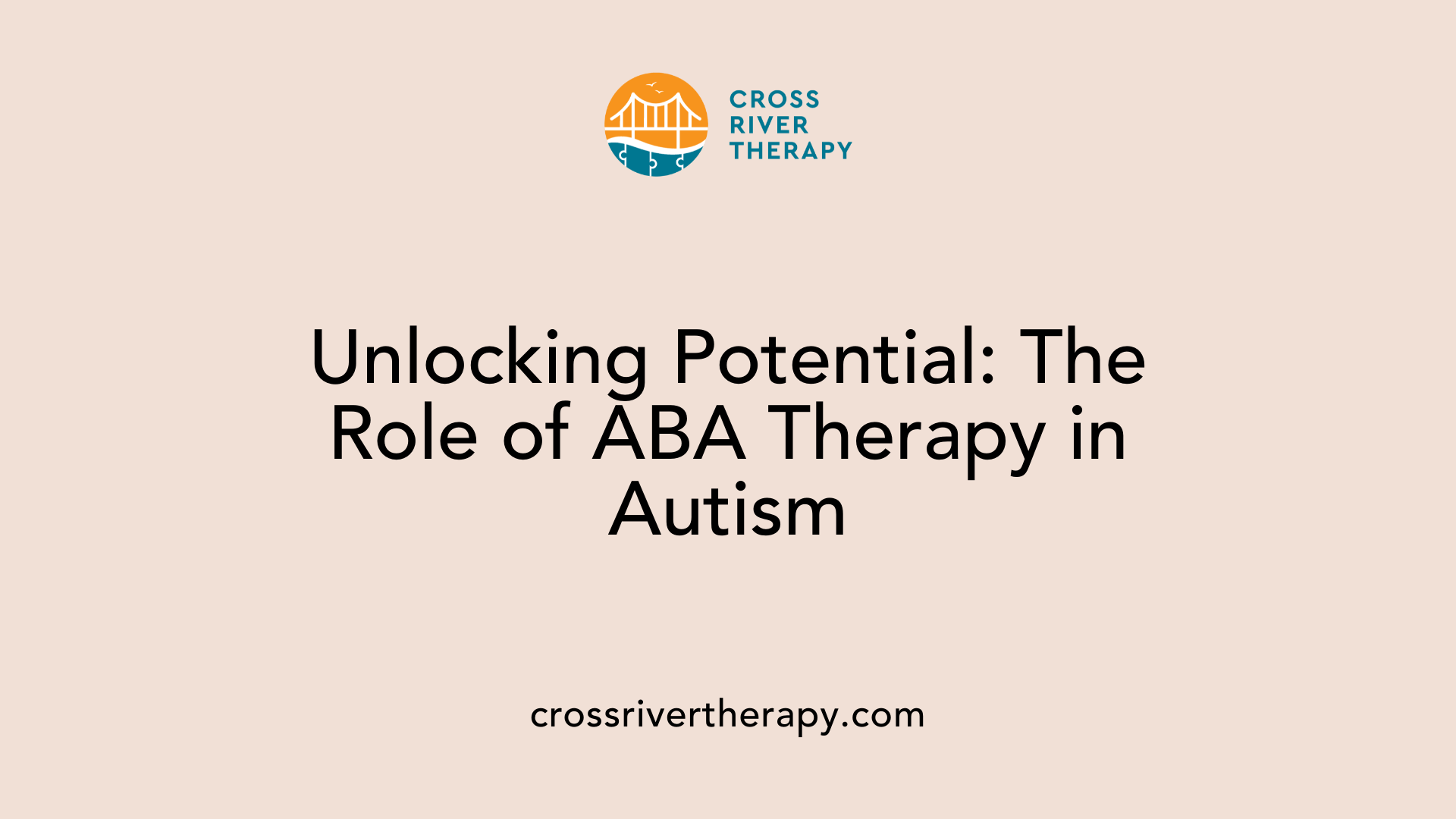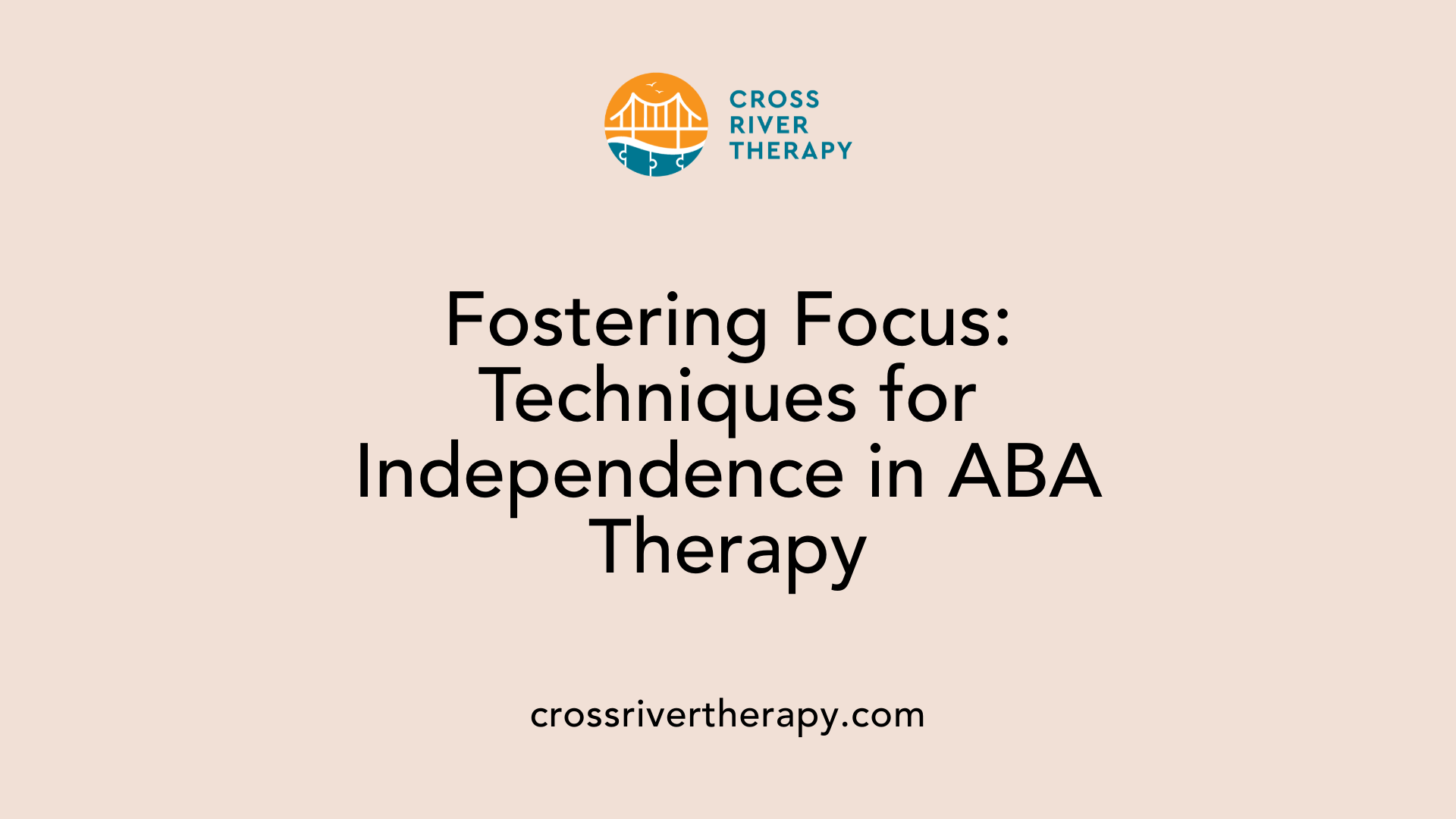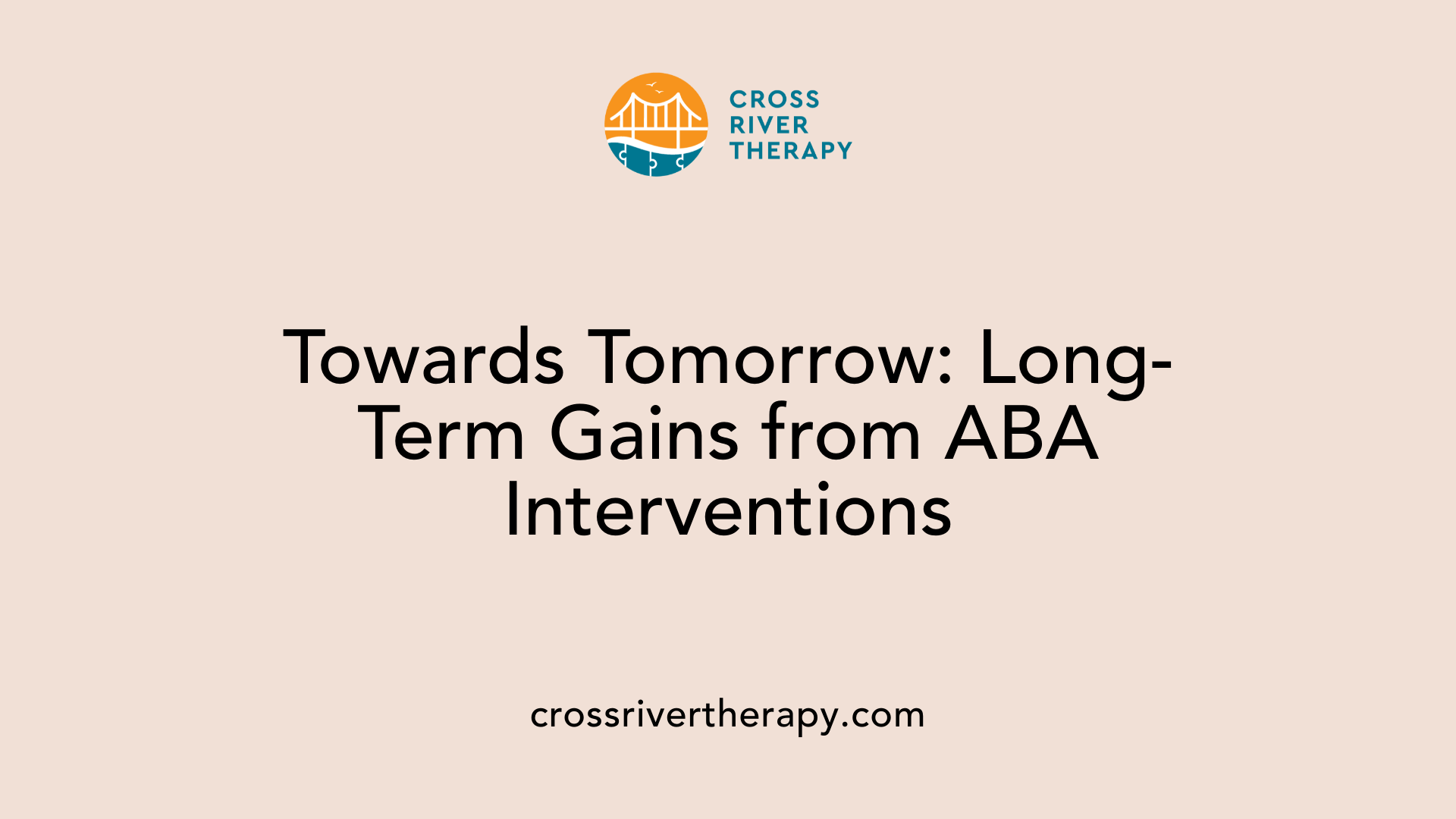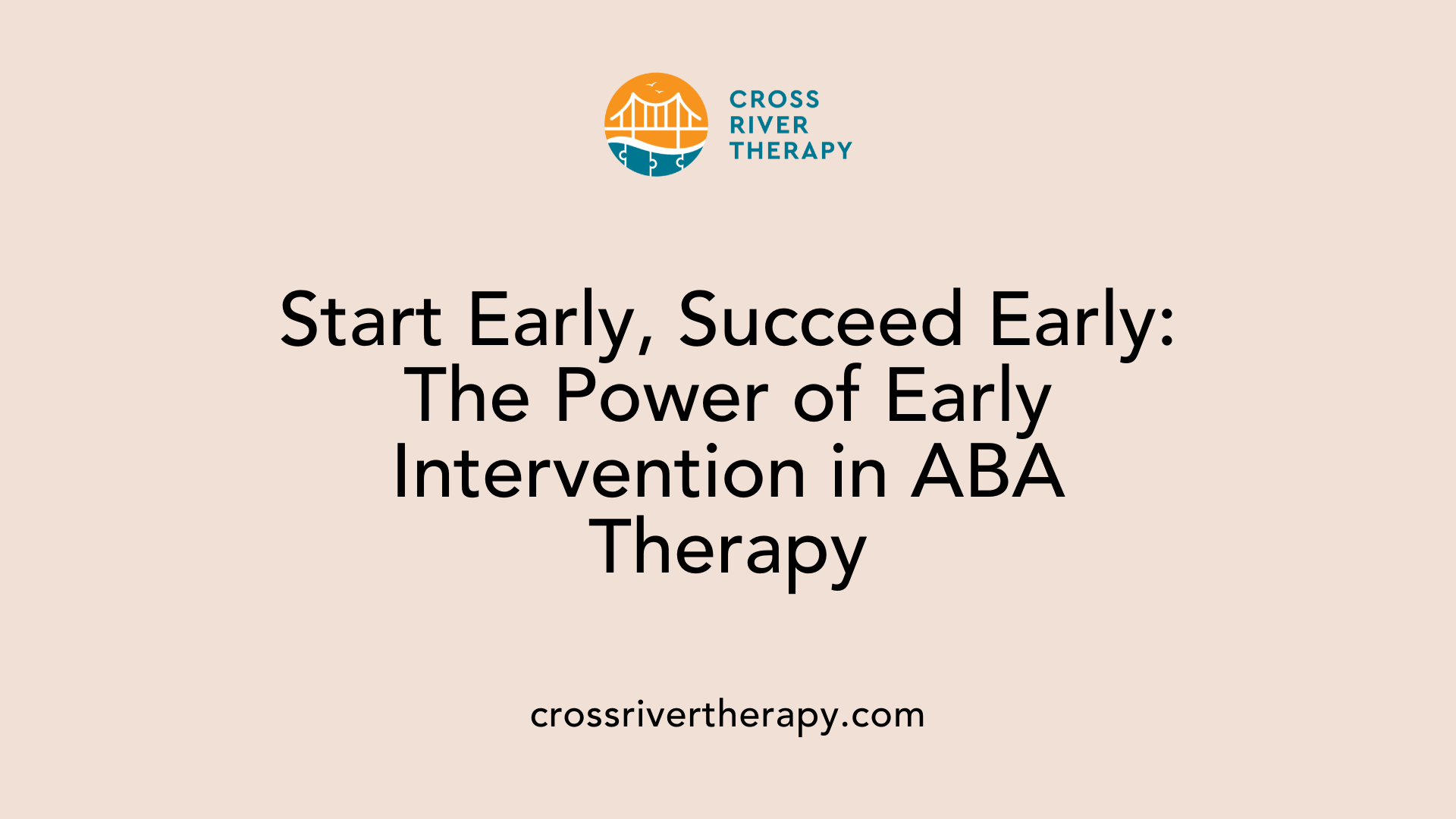How ABA Therapy Centers Prepare Children for Future Success
Unlocking Potential: The Role of ABA Therapy in Shaping Future Success for Children with Autism
Introduction
Applied Behavior Analysis (ABA) therapy has emerged as a transformative intervention for children with Autism Spectrum Disorder (ASD), equipping them with crucial skills for future success. By focusing on tailored teaching methods and positive reinforcement, ABA therapy prepares children for academic challenges and social integration, ultimately fostering independence and confidence. This article delves into how ABA therapy centers empower children to succeed, highlighting key techniques, benefits, and the pivotal role of collaboration between therapists, educators, and parents.
The Crucial Role of ABA Therapy in Autism

Importance of ABA therapy for children with Autism Spectrum Disorder (ASD)
ABA therapy is integral to equipping children with Autism Spectrum Disorder (ASD) for future success. By focusing on communication, social skills, and daily living activities, this therapy addresses their unique challenges. It creates a structured and personalized environment where children can learn, thrive, and adapt.
ABA therapy applies positive reinforcement techniques within a systematized framework. This not only promotes desirable behaviors but also helps in diminishing problem behaviors, leading to a more productive learning experience.
Development of essential skills through ABA
ABA therapy effectively breaks down essential skills into manageable steps. For example, it enhances daily communication through discrete trial training (DTT), significantly improving language development and expression of needs. This process not only reduces frustration but also paves the way for richer social interactions.
Furthermore, the therapy methodically teaches social skills, such as turn-taking and understanding cues. These proficiencies are vital for establishing relationships and encouraging inclusion in classroom settings.
Role of ABA in fostering independence
Independence is a key goal of ABA therapy. The skills developed during therapy foster autonomy, enabling children to navigate their school environment confidently. By focusing on communication, motivation, and personalized goal-setting, ABA prepares children to manage academic tasks and social interactions effectively.
Research indicates that children who engage with ABA therapy early on show great improvements in social, communication, and behavioral skills. The long-term benefits encompass not just academic readiness but enhanced life skills, promoting successful transitions into school and beyond.
Techniques that Enhance Focus and Independence

What techniques are used in ABA therapy to develop skills like focus and independence in children with autism?
ABA therapy employs a variety of techniques specifically designed to enhance focus and promote independence among children with autism. By breaking down learning into manageable components, these methods provide children with the tools they need to thrive in school settings.
Key methods in ABA for skill development
- Discrete Trial Training (DTT): This method breaks skills into smaller, manageable tasks. Each task is taught in a systematic way using positive reinforcement to encourage the correct response. This structured approach is particularly beneficial in promoting learning and retention of new skills.
- Antecedent-based Interventions (ABI): ABI techniques modify the learning environment to minimize distractions. Adjustments may include altering the setting, providing visual cues, or using prompts that help maintain children's focus during activities.
- Functional Behavioral Assessments (FBA): FBAs analyze specific behaviors to identify triggers and develop personalized strategies that engage children positively. This allows for interventions tailored to each child's unique needs, fostering both focus and independence.
Use of Discrete Trial Training (DTT) in ABA therapy
DTT lays a strong foundation for children's learning. By providing clear instructions and immediate feedback, children can grasp complex skills gradually, which is critical in boosting their confidence and independence in a classroom setting.
Tailoring interventions to individual needs
A considerate and individualized approach is vital in ABA. Collaborating with parents, educators, and therapists ensures that strategies align with each child’s strengths and challenges. This holistic effort enhances children's ability to manage their social interactions and academic tasks effectively, thereby supporting their school readiness.
Preparing for School and Social Interactions
How does ABA therapy influence a child's readiness for school and future social interactions?
ABA therapy plays a pivotal role in preparing children, particularly those with Autism Spectrum Disorder (ASD), for school by developing a range of essential skills. This therapy enhances attention and self-regulation, making it easier for children to focus in distracting classroom environments.
Through structured and personalized interventions, ABA therapy breaks down complex skills into manageable components. For instance, communication skills are fostered via techniques such as Discrete Trial Training (DTT), allowing children to express their needs and thoughts effectively. This reduction in frustration subsequently facilitates smoother social interactions.
Furthermore, the collaboration between ABA professionals and educators is essential in crafting Individualized Education Plans (IEPs). This joint effort supports children's unique needs and ensures targeted strategies are utilized, making the transition to school more effective.
Developing social skills through ABA
Social skills are a crucial focus of ABA therapy. It systematically teaches children important interactions, such as turn-taking and recognizing social cues. These skills are vital for forming friendships and navigating complex social situations in a school setting.
In addition, ABA fosters independence by equipping children with communication skills essential for interacting with peers and participating in classroom discussions. Children practice these skills in safe, structured environments, alleviating anxiety and boosting their confidence in social settings.
Role of structured environments in reducing anxiety
Structured environments created through ABA therapy provide a predictable routine that can significantly reduce anxiety for children with autism. This predictability is important as it minimizes distracting elements and helps children manage their responses to new situations. ABA therapists work with families to implement consistent practices at home and school, promoting continuity and comfort for the child.
Overall, the methodologies incorporated in ABA therapy not only prepare children for school but can lead to long-term benefits by enhancing their ability to engage socially and academically in their environments.
Behavior Management and Communication Development
Behavior Management Techniques in ABA
ABA therapy employs effective behavior management techniques that are crucial for children with Autism Spectrum Disorder (ASD). These techniques focus on identifying triggers for challenging behaviors and implementing strategies to reduce them. By teaching children appropriate ways to express their needs and manage their emotions, ABA therapy not only enhances the quality of life for these individuals but also creates a conducive learning environment.
Improving Communication Skills in Children with Autism
Another significant aspect of ABA therapy is its emphasis on communication skill development. Children with autism often face challenges in expressing themselves, which can lead to frustration. ABA therapy systematically breaks down language skills into manageable components. This personalized approach helps children improve their ability to communicate both verbally and non-verbally, fostering better classroom participation and enhancing their interactions with peers.
Use of Discrete Trial Training (DTT)
A key method within ABA therapy is Discrete Trial Training (DTT). This technique utilizes structured teaching moments that are broken down into small, teachable steps. Children receive immediate feedback, which promotes learning through positive reinforcement. DTT not only aids in language development but also supports the mastery of various skills, ensuring children are better prepared for the demands of a school environment.
| Technique | Focus Area | Benefits |
|---|---|---|
| Behavior Management | Managing challenging behaviors | Create a better learning environment |
| Communication Skills | Enhancing verbal and non-verbal communication | Fosters peer interaction and classroom participation |
| Discrete Trial Training (DTT) | Structured learning | Promotes mastery of skills through immediate feedback |
Promoting Long-term Success Through Interventions

Effectiveness of ABA interventions
ABA therapy interventions stand out due to their proven effectiveness for children with Autism Spectrum Disorder (ASD). These interventions yield notable improvements in multiple areas, including communication, social skills, and daily living activities. Research indicates that around 40-50% of children benefit sufficiently to transition into mainstream classrooms, especially when they begin these interventions early and receive intensive support.
Long-term benefits for children and families
The benefits of ABA therapy extend beyond immediate skill acquisition. It fosters independence by equipping children with essential life skills, such as personal hygiene and self-management. This not only boosts the child's confidence but also enhances the overall quality of life for families. As children adapt to their environments more effectively, families experience reduced stress and greater harmony, contributing to long-lasting relational benefits.
Emphasis on positive reinforcement
A remarkable feature of ABA is its focus on positive reinforcement. By rewarding desired behaviors, therapists encourage children to recognize and repeat these behaviors in real-life scenarios. This technique not only cultivates a motivating learning atmosphere but also helps children manage emotions and develop social interactions in constructive ways. Ultimately, the structured, personalized approach of ABA equips children with the necessary skills to thrive both academically and socially.
Collaboration: A Key to Successful Interventions

Collaboration between Parents, Educators, and Therapists
The success of ABA therapy hinges on effective collaboration among parents, educators, and therapists. This teamwork ensures that children with autism receive consistent support across environments. Parents provide essential insights into their child’s behavior and interests, while educators set academic expectations that can be tailored to the child’s unique needs.
Customizing Education Plans (IEPs)
Through collaboration, individualized education plans (IEPs) can be customized effectively. ABA professionals work alongside teachers to integrate therapeutic techniques into the classroom setting, ensuring that the educational approach aligns with the child’s therapy goals. This synergy fosters a more cohesive learning experience that is vital for the child’s development.
Impact of Partnership on Skill Development
Partnerships among all stakeholders result in improved skill development. Continual communication and shared strategies help reinforce learning, making transitions smoother and enhancing social interactions. Children benefit from this structured approach, gaining vital communication, social, and academic skills that support their school preparation and overall growth.
The Power of Early Intervention

Importance of starting ABA therapy early
Engaging children with Autism Spectrum Disorder (ASD) in Applied Behavior Analysis (ABA) therapy at an early stage is crucial. Early intervention not only lays a strong foundation for academic success but also nurtures essential social skills. This proactive approach equips children with tools that enhance their learning and social interactions as they prepare for school.
Research supporting early interventions
Research has shown that children who receive high-quality ABA therapy early in their lives demonstrate significant improvements across various domains, including communication, social skills, and behavior management. These skills are essential as they transition into school environments, making early ABA a powerful determinant of future success.
Ease of transition into school environments
The comprehensive nature of ABA therapy aids in creating smoother transitions to school settings. By addressing challenging behaviors and enhancing attention, children become better prepared to deal with classroom dynamics. Moreover, the collaboration between ABA therapists, educators, and families ensures continuity in skill development, greatly assisting children with autism in adapting to new social and academic challenges.
Parental Involvement: A Cornerstone of Success
Benefits of parental involvement in ABA therapy
Parental involvement plays a crucial role in the ABA therapy process for children with autism. Active participation enables parents to reinforce behaviors learned during therapy at home, significantly aiding in skill generalization. When parents consistently apply strategies taught by therapists, it leads to better developmental outcomes, making the therapy more effective in various environments such as home and school.
Consistency in behavioral strategies
Consistency in applying behavioral strategies is essential for enabling children to thrive. When parents and therapists align their efforts, children benefit from a cohesive learning experience that supports their growth. This continuity helps reduce confusion, making it easier for children to understand expectations in different settings.
Empowering parents through education
Educating parents about ABA strategies is vital. By understanding the principles of ABA, parents feel empowered to support their child's learning journey. This knowledge allows them to identify triggers and reinforce positive behaviors effectively.
Ongoing communication between parents and therapists fosters trust and collaboration, ensuring tailored intervention plans meet the child's unique needs. By actively participating in their child's therapy, parents not only boost motivation but also contribute significantly to their child's academic and social success. Ultimately, parental involvement is a keystone in the effectiveness of ABA therapy.
Transformative Impact on Daily Life and Academics
Enhancing quality of life with ABA
ABA therapy significantly improves the quality of life for children with Autism Spectrum Disorder (ASD). By employing behavior modification techniques, it addresses challenging behaviors typically associated with ASD. This empowerment leads to reduced frustration and anxiety, enabling children to engage with their environment more positively.
Application of ABA techniques in everyday situations
ABA techniques are tailored to fit into the daily routines of children. For instance, skills such as turn-taking or understanding social cues are systematically taught. By focusing on manageable steps, therapy helps children practice these skills in familiar contexts, whether at home or in social settings. As they gain confidence, children become more capable of navigating their surroundings.
Integration of therapy within academic settings
Collaboration remains crucial as ABA therapists work closely with educators to develop individualized education plans (IEPs). This partnership ensures that therapeutic techniques are seamlessly incorporated into the classroom, bolstering academic readiness. Through these integrations, children not only enhance their communication and social skills but also prepare for the structure and expectations of school life.
| Aspect | ABA Therapy Impact | Overall Outcome |
|---|---|---|
| Quality of Life | Reduces challenging behaviors, promotes positive interactions | Greater emotional well-being |
| Daily Life Skills | Teaches turn-taking, social interactions | Improved comfort in social situations |
| Academic Integration | Collaborates on IEPs, incorporates therapy in schools | Enhanced learning and school preparedness |
| Long-term Benefits | Fosters independence, improves social management | Lifelong skills for personal growth |
Conclusion
ABA therapy centers are pivotal in transforming the futures of children with Autism Spectrum Disorder, preparing them for the challenges of school and beyond. Through structured interventions, personalized strategies, and collaboration between therapists, families, and educators, children develop vital skills that facilitate independence and social connectivity. With a focus on early intervention and the active involvement of parents, ABA therapy not only enhances immediate learning outcomes but also establishes a foundation for lifelong success. By fostering a supportive environment, these centers help children navigate the complexities of life with confidence and resilience, paving the way for a brighter future.
References
- ABA Therapy for School Readiness: Empowering Children's Success
- How ABA Therapy Can Prepare Children for Classroom Success
- ABA Intervention for Autism: Prepare Your Kids For School
- Applied Behavior Analysis (ABA) | Autism Speaks
- How ABA Therapy Can Improve Your Child's Life
- Benefits of ABA Therapy for Children with Autism
- Why Consistency in ABA Therapy Is Key for Long-Term Success
- The Top 10 Reasons Children With Autism Deserve ABA - PMC



